How Ludhiana-based Nahar’s 40-year presence in corrugation found its mojo
“The per kilo conversion cost is high, and so, brown box manufacturers are left with no course of action but to charge a set up cost for orders below the MOQ. This is an ongoing challenge for any new client with a smaller lot or single time orders”. So say the father-daughter duo, Rajnish and Aashriya Jain of Nahar Paperboard in a freewheeling conversation with Abhay Avadhani of WhatPackaging?
19 Jun 2024 | By Abhay Avadhani
Abhay Avadhani (AA): Currently, Nahar Paperboard produces 1,400-1,500 MT of paperboard. What are your 2030 targets?
Rajnish Jain (RJ): Our aim is 2,500 MT by 2030. We're transitioning machinery to enhance production and quality, targeting A, B, C, and E flute types, with a ton of latest automations.
AA: How has 2023-2024 been for Nahar?
RJ: We focused on a zero coal trajectory and switched away completely from pet coke fueling our boilers to Agro Waste, reducing our Scope 1 carbon footprint emissions by 60% in just one year. Our annual CO2 emissions were at 2160 MT, we aim to further cut CO2 by 45% by 2030.
AA: What about sustainable methods?
RJ: We're advancing sustainable methods at Nahar using FSC, solar generated electricity, rainwater harvesting, zero coal trajectory and waste water management.
AA: How does Nahar manage waste at its Ludhiana plant?
RJ: We use auto-shredder technology at the machinery to collect waste. This is sent back to the paper mill for re-use and recycling. Trained in Lean, Green, Zero Waste Principles by IIMM, we prioritise waste reduction.
AA: How does Nahar address waste due to low-quality kraft paper?
RJ: For quality production, we follow a simple mantra: Good machine, good paper and a good operator. There is no compromise, whatsoever.
AA: How do you source your paper?
RJ: We source high-quality paper from FSC-certified suppliers, even if it means extra cost because there is a lack of availability of high burst factor (BF) material in the North. This means shifting our sourcing partners to the Western part of India to ensure quality grade material.
AA: What unique strategies, like transparent pricing, distinguish your approach in discussions with your partners?
RJ: Working with giants like Godrej & Boyce and Decathlon. This means that we need to constantly update our strategies and approach towards technological transformations, international standards and our contribution to sustainable packaging. We bagged the Platinum Rating at the GreenCo Summit, India in 2017 which further advanced our journey. We prioritise transparent pricing and timely delivery, earning trust over price competition. Forwarding the net delta price to our clients is one such example of mastering the volatility in this price sensitive market.
Four step process control parameters at Nahar
An incoming control plan which monitors the raw material in terms of its GSM, Cobb, bursting strength and RCT
Observe in-process materials, explicitly the board moisture, board bursting factor, glueing performance, printing, cutting, sizes and thickness
Final control of the finished product ensures its cut crease and external dimensions, glued joints, strapping, compression strength, weight, ECT and bursting strength
Quality reporting for all three processes is uploaded on the ERP against their job cards in real time to ensure efficiency of the system
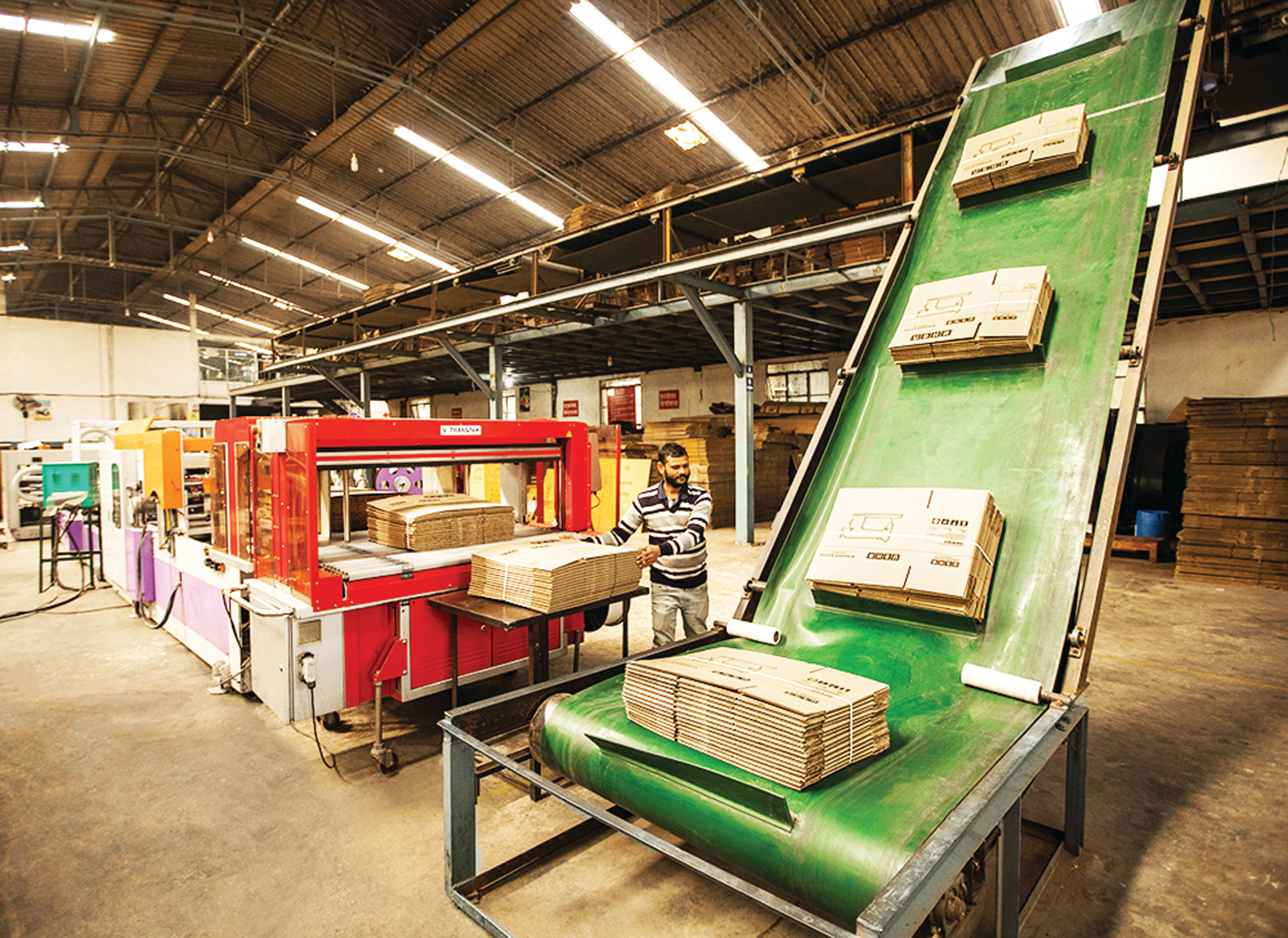
The factory is located on a 2.5 acres plot and stocks 2,600+ paper reels
AA: What's the future of folding box boards (FBB)? Any structural changes?
RJ: The future of FBB is anticipated to rise at a steady rate for the foreseeable future. Being made from sustainable sourced wood pulp, it is a recyclable, renewable and a biodegradable material. However, we believe for the market to shift towards higher grades of imported and domestic waste based papers to meet their packaging needs.
AA: What percentage of boxes sold have FSC certification?
RJ: 100%. We're FSC COC certified since 2021. Additionally, we ensure all our paper vendors to be FSC certified for a sustainable supply chain.
AA: How does Nahar monitor and control its processes?
RJ: Our system control and compliance monitoring happens online. As mentioned, keeping up with technological advancements is crucial to manage the pace with which our industry is growing. We run our business with Finsys, a specialised ERP software for corrugated packaging. It's a ready-to-use software that helps us analyse our production, sales, finances and quality controls in one place.
AA: One project that was most challenging?
RJ: Managing excess raw material and inventory is a challenge. With FMCG giants like Bonn Food Industries and Daawat along with apparel leaders like Monte Carlo and Reliance Trends on board, we need to be prepared for fortnightly product launches. This means ensuring availability and storage of desired packaging for prototyping. Our unit, spanning over 2.5 acres, stocks at least 2,600+ paper reels, each weighing over 1,000 kilos along with a 100 MT fg stock, to facilitate just-in-time deliveries.
AA: What steps is Nahar taking for automation?
RJ: Implementing ERP-driven stock management, geo-fencing for fleet tracking, and predictive data analysis for smarter operations.
AA: How can converters cut costs through process innovations?
RJ: Look for improvements that reduce breakdown time, utilise digital tools to trim labour costs, and implement operational changes to slash production expenses. We usually start with a factory audit, then track and analyse process costs. As a result of this, we are in process of implementing an automated print management system (PMS) system and auto slicers to improve the board line performance.
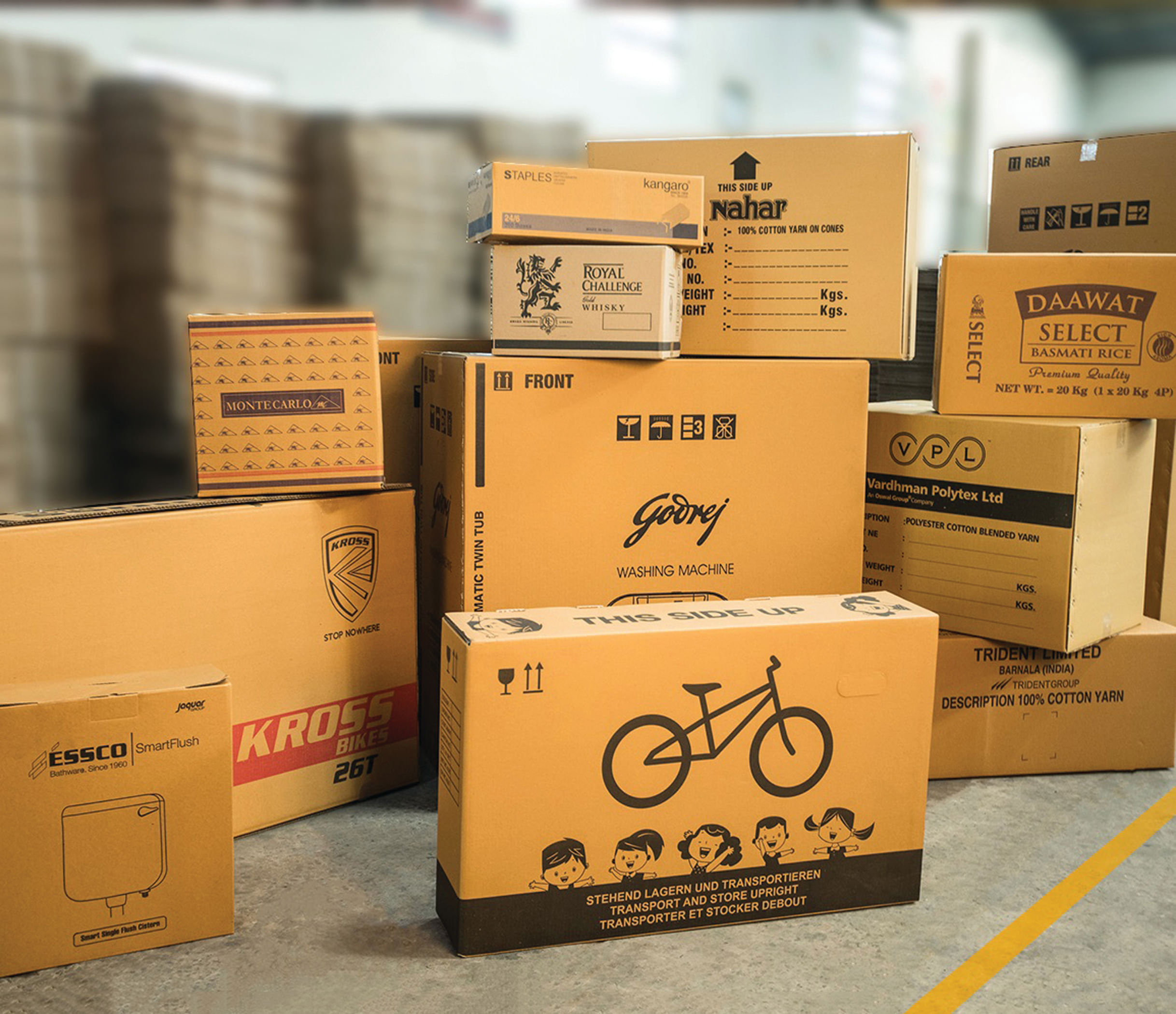
Nahar works with global giants like Godrej & Boyce and Decathlon
AA: What are the trends and challenges in the corrugated industry?
RJ: Two notable trends in the corrugation industry are the rising demands of eco-friendly products and the increased integration of technology to amplify product quality. As per kg conversion cost is high, auto line manufacturers are left with no course of action but to charge a set up cost for orders below the MOQ. This is an ongoing challenge for any new client with smaller lot or single time orders.
AA: What are you doing to reduce inventory? Any other irritants?
RJ: The major irritant in the corrugation industry is the lack of a price index with an extremely price sensitive customer base. The demand-supply gap in the paper industry leads to mills playing in a monopolistic market leading to shutdowns causing delays in supplies, impacting the supply chain. Lack of flexibility to produce for smaller quantity orders further impacts competitiveness.
AA: One final question. Punjab is said to be the hub of corrugators. What role does demographics play?
RJ: Ludhiana is set to elevate its status as North India's industrial hub with its booming textile, hosiery and bicycle industry. However, each of these industries come with their packaging and corrugated box requirements for seamless transportation of their end products. So yes, demographics are playing an influential role in making Ludhiana as one of the leading hubs of corrugation in North India.
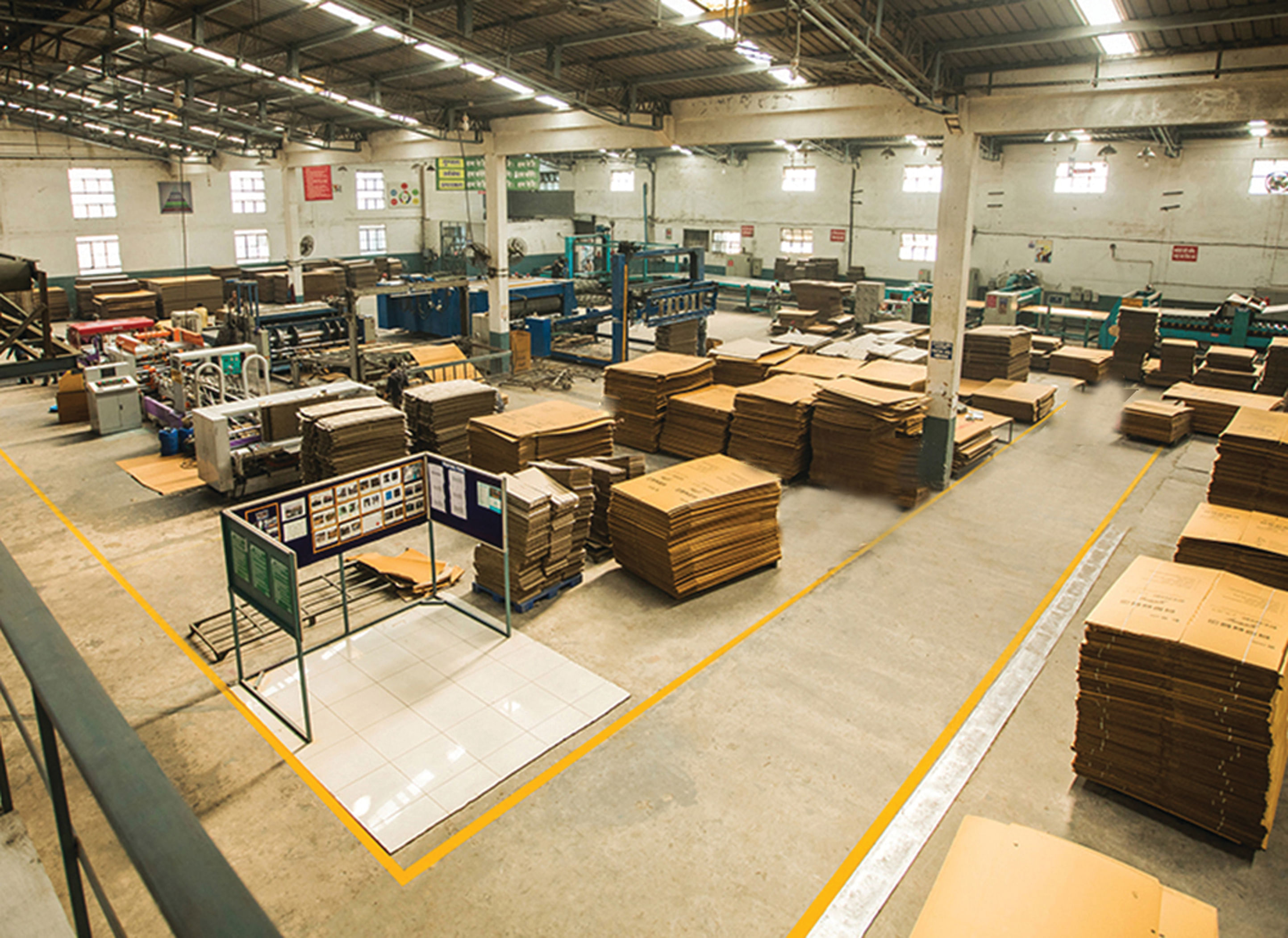
Nahar's automation practice: ERP-driven stock management, geo-fencing for fleet tracking, and predictive data analysis for smarter operations
Spotlight on Aashriya Jain
You have had a stint at a packaging design firm in London. One change you introduced which made the process better …
I worked in a paper and packaging company for over two years, in London, pre-Covid. There was lots to learn from my experience there and bring back to my own business back home. One such learning was to focus on the remarkable growth in the packaging sector whilst embracing it with innovation and sustainability. Since day one, my focus has been to record and monitor data in order to reduce the GHG emissions of our company as a whole.
Fav-most process on the Nahar factory floor?
Auto-stitching.
One tip you have about what is needed next?
There is an unhealthy competition amongst corrugators resulting in absurd conversion charges. It is severe. If somehow this cluster starts following a simplified method of charging reasonable conversions according to the industry norms, it will be a game-changer.
One suggestion for machine manufacturers?
The use of AI and tech advancements to plan better for electricity consumption loads, can really help us cut conversion.
A corrugation box which made you go, WOW!
A year ago, we printed a Zebronics box with a full size image of their brand ambassador, Hrithik Roshan on our Topra GD 1632.
A factory you visited which blew your brain! Why so?
We visited Dezhou Chunxiang, China this year. I was amazed to see how two corrugators for 5-ply and 7-ply each, had a capacity of 10,000 MT/month, were placed next to each other. They had polyester thread technology for corrugation, auto loading for reels, 40+ trucks waiting for loading and seamless flow of operations! All in all, it was a plant that blew our brains away!
3-ply corrugation or 5-ply corrugation?
5-ply! Better conversion, better overall tonnage, better weight of the box and strength. However, the right box is always industry specific.
Traditional or eCommerce?
We believe eCommerce is just another sector being added to the long list of traditional packaging box buyers but of course with a very promising future.
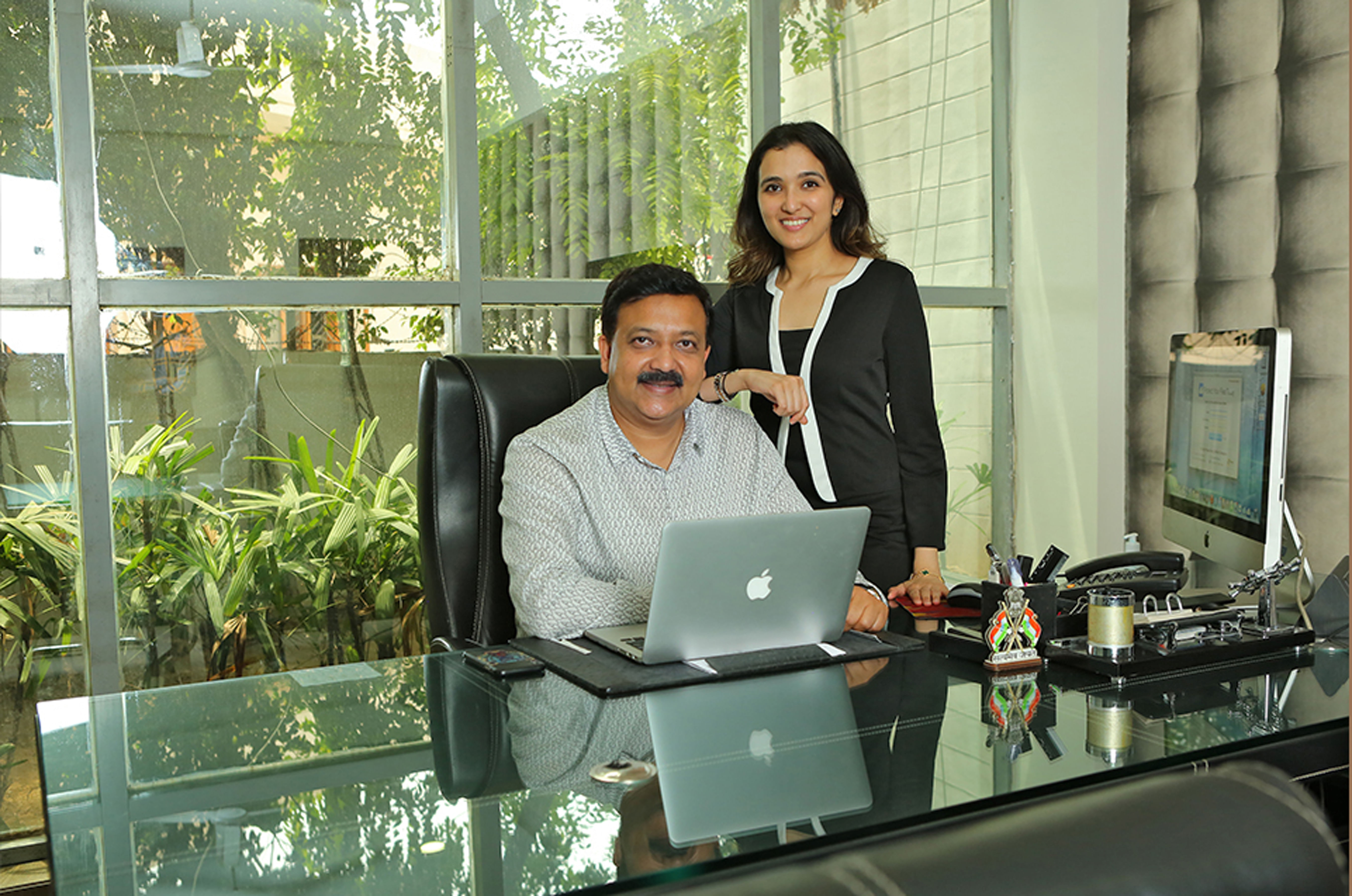
Rajnish Jain (l) and Aashriya Jain (r)
Increase throughput or reduce waste?
Reduce waste! When you reduce waste, your output for existing production will go up, increasing profitability.
First thing you notice in a corrugated box?
Physical appearance and aesthetics. A box with no flute lines being visible at the first glance is surely the first thing we notice.
One question you always ask when you are meeting a customer?
Clear volume expectations (MOQ) and requirements.
One industry leader who you met who has impressed you?
Hari Om Khanna, managing director of Himpackwell. He is converting around 5,000 MT per month, almost 3.5 times of our existing conversion along with an immaculate plant and a stringent focus on neatness. Lots to learn.
What’s the best piece of advice you’ve received at your business schools in the UK?
I studied in two business schools in the UK, Warwick and Imperial. One of the best pieces of advice I ever received was to never limit myself to one industry, get exposed to a broad range of business functions and shadow as many professionals in their respective fields as possible. This really helps in knowing what you are challenged by and what you'd like to pursue in the future.
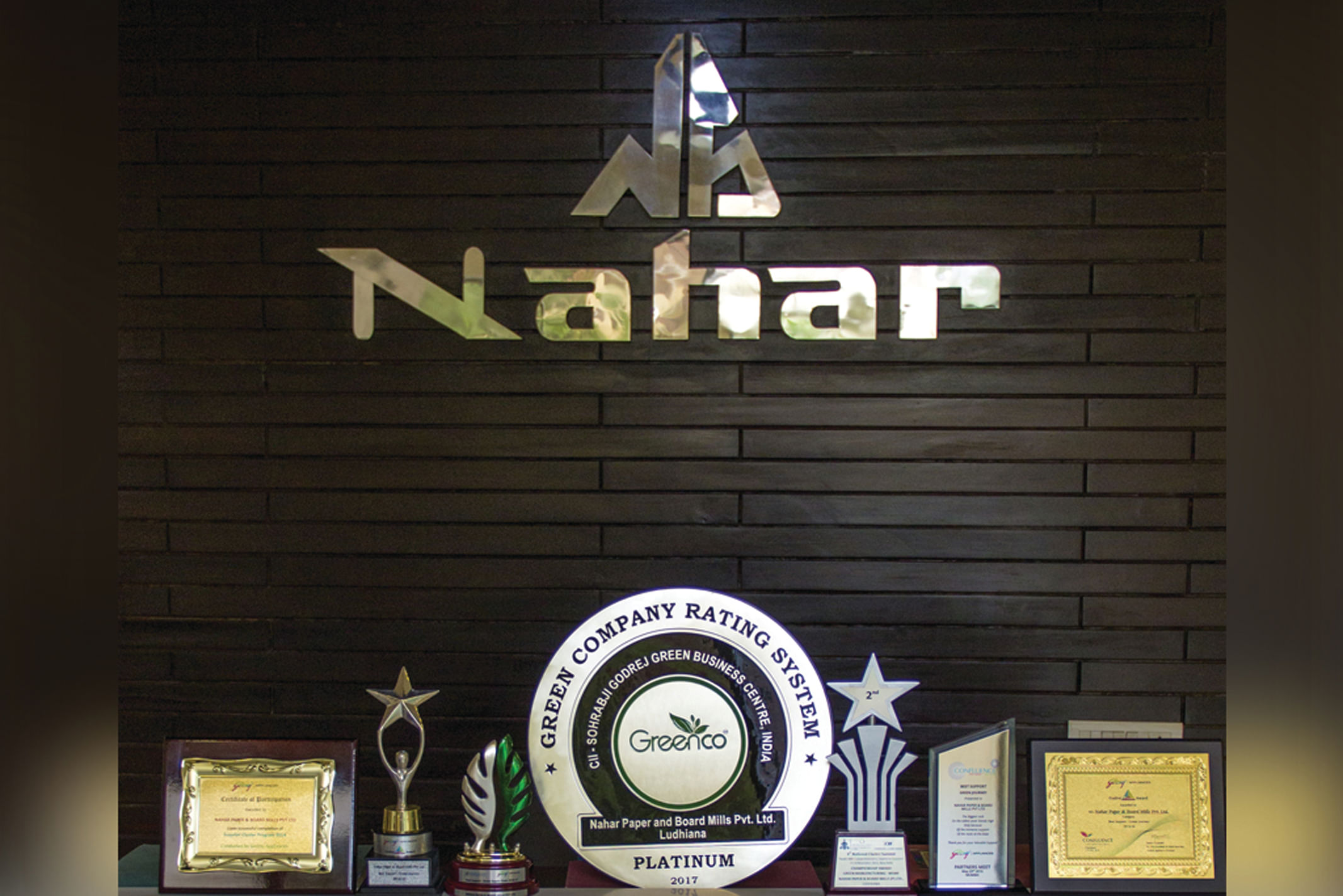 Award for sustainable disruption
Award for sustainable disruption
Nahar Paper & Board Mills received the highest ranking Platinum Award for the CII National Kaizen Circle Competition 2024
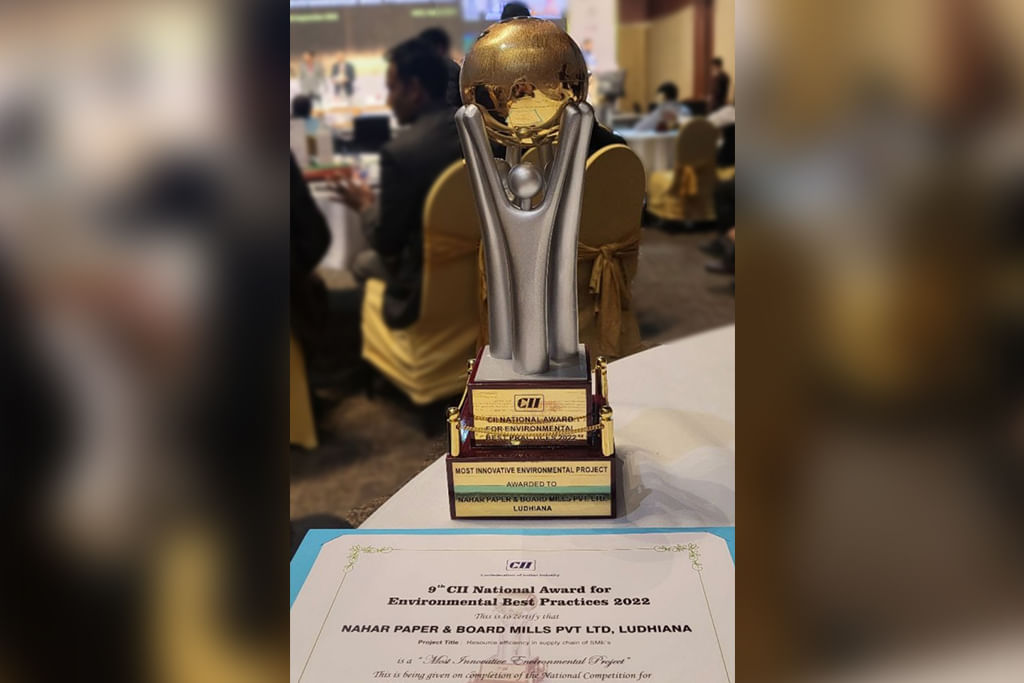
The company also received the 11th CII National Award for Environmental Best Practices 2024 by the Confederation of Indian Industry in partnership with GreenCo


